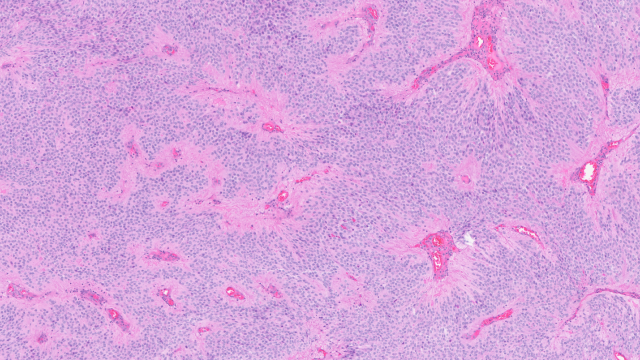
Animation still of cytokine release.
Photo credit: scientificanimations.com, via Wikimedia Commons. No changes were made to this image.
A new computational tool developed by CCR researchers predicts the biological effects of signaling molecules called cytokines, which help control the development, distribution and activity of immune cells in the human body. Cytokines are essential to coordinating effective immune responses, but they can also cause serious problems, such as cytokine release syndrome, which results in an overabundance of cytokines and is sometimes experienced by patients who receive certain cancer immunotherapies. The new tool, called CytoSig, will help researchers investigate the mechanisms behind diseases involving cytokines and will also inform potential treatment strategies in various diseases. It is reported Sept. 30, 2021, in Nature Methods.
Human immune cells produce more than 200 different cytokines. To help researchers tease out exactly how these signals shape immune activity, Peng Jiang, Ph.D., Stadtman Investigator in the CCR Cancer Data Science Laboratory, collaborated with immunologist Kai Wucherpfennig, M.D., Ph.D., at the Dana Farber Cancer Institute to develop CytoSig. Their team’s first step, led by former CCR visiting graduate student Yu Zhang, M.D., Ph.D., was to compile more than 20,000 publicly available transcriptomes – complete profiles of the gene activity in various cells. Each transcriptome in the analysis detailed how cells respond to specific cytokines or other signaling molecules. Cytokines themselves can be fleeting, and their effects vary depending on which cells receive their signals. So, gene expression changes are useful indicators of which cytokine signals a cell has received, Jiang explains.
Finding and annotating relevant data was, at first, a tedious task, but the team developed a program named Framework for Data Curation and trained it to take over the work. Their database, which will grow as new data becomes available, now catalogs the effects of 43 human cytokines. It is the foundation of CytoSig, which serves as a comprehensive catalogue of how cells respond to cytokines, but can conversely also predict cytokine signaling activities when users input transcriptome profiles from their own samples. The data collection also revealed previously unidentified roles of cytokines, such as BMP6 as an anti-inflammatory signal.
Jiang says CytoSig could help clinicians assess patients’ response to therapies that target cytokine signaling. For example, when given data from blood samples taken three days after patients received an anti-inflammatory arthritis medication, the model was able to predict which patients benefitted from the treatment weeks later.
The tool is also useful for investigating the mechanisms of disease. Jiang’s team has used the platform to analyze data from patients with COVID-19, and discovered that in severe cases, the cytokines IL1B and IL10 are elevated in certain immune cells. Their model predicts that blocking another cytokine, CXCL8, might alleviate dangerous inflammation triggered by IL1B and IL10.
CytoSig is an impressive example of the power of mining large, publicly available datasets, and it will be a useful resource for clinicians and researchers.


